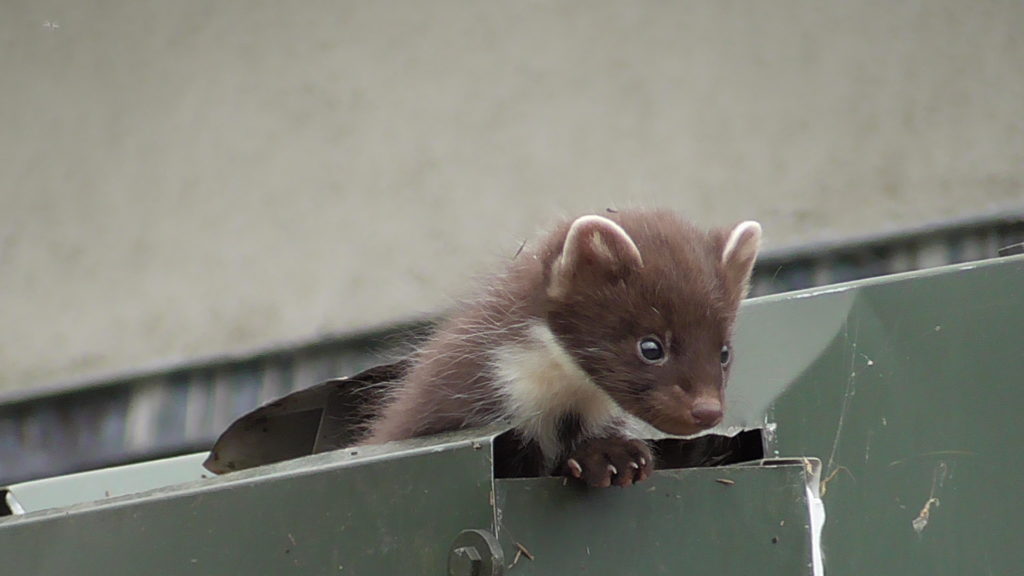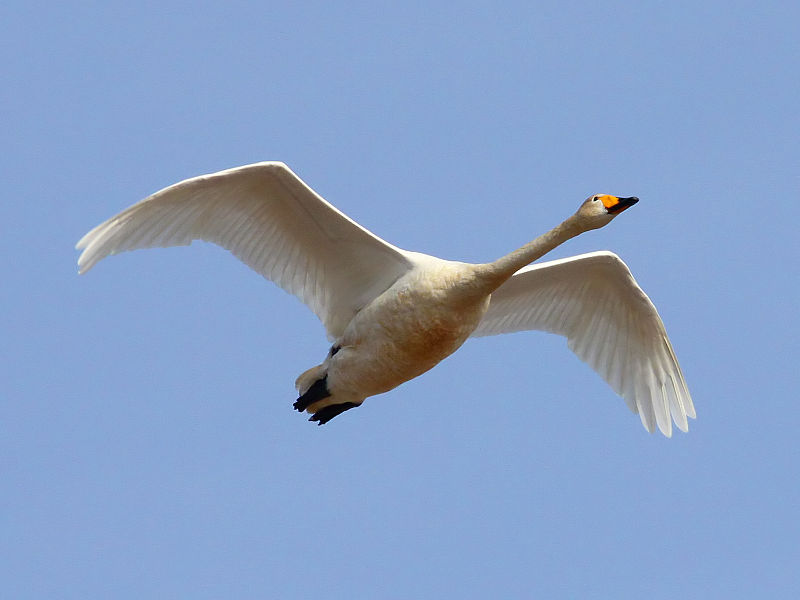MAL ROGERS surveys a handful of the island’s more interesting residents
Safaris in Africa usually advertise the Big Five in their game reserve or wildlife sanctuary: namely the lion, leopard, rhino, elephant and African buffalo.
Certainly you’ll see these, or some of them, on your average safari park jaunt. Scouts will already have reccied out the land before your 4WD-Climate Changer heads out in the morning, the driver guided to the quarry by walkie-talkie.
So you’ll race across the savannah, and chances are you’ll be able to photograph the big game to your heart’s content.
Don’t get me wrong — this can be a rewarding experience (and one I've enjoyed); plus, looked at philosophically, it helps conserve these animals while at the same time bolstering the local economy.
But let me tell you — just as many rewarding experiences exist in Ireland. Spotting, for instance, a stoat out looking for its dinner, or a hare taking off with the acceleration of an Italian sports car — these are wonderful sights.
So never mind Africa’s Big Five — here’s my own list: Ireland’s Not Quite So Big Seven
 A pine marten kit at the Clare 250 Cancer Care Centre in Ennis
A pine marten kit at the Clare 250 Cancer Care Centre in EnnisTracking the droppings
Despite having walked in the mountains, hills and forests of Ireland — and elsewhere — for many decades, I’ve only seen a pine marten in the wild maybe half a dozen times. Contrary to what wildlife programmes might lead you to believe, animals that roam free tend to be very shy of humans, and are often difficult to spot.
But pine martens have a burgeoning population, and your chances of seeing one is reasonable depending on where you ramble.
Bilberries, rowan berries and blackberries make up much of their diet, often resulting in the animals' scats (droppings) turning blue or red in colour. So if you see blue poo, you could be on the right track. This beautiful, but elusive animal may be nearby. Numbers have certainly increased in woodland across the island in recent years, and you’re in with a chance of seeing one in any county. They’ve even been reported on bird feeders.
Emer Dunne at the Clare 250 Cancer Centre in Ennis contacted me to say: “We've been highly entertained by three pine marten kits in the grounds of our centre.”
You can see more of their antics on their Facebook page https://fb.watch/kVQbaJ_yhj/
Celebrity big blubber
You will see seals. Really, anywhere along the coast — either the common seal (which isn’t so common) or the grey seal (which is).
With their pouty mouth, and big soulful eyes, they haunt harbours looking for lunch, or sun themselves on isolated beaches.
For something so lovable they’re a bit fat and ugly, to be honest. Bit like myself, as it happens.
Most fishing boat harbours have their own resident seals — the ones in Howth Harbour glide up to the quayside when a fishmonger, having finished monging for the day, rings a bell to tell them he’s about to throw unwanted fish bits into the sea. They appear very grateful.
PISCINE POSTSCRIPT: The one fish the Howth seals — or any other Irish seals — are unlikely to come across is the red Irish lord (Hemilepidotus hemilepidotus). It’s not quite clear why it should be so named as it [s not native to anywhere even remotely close to Ireland, being found in the north Pacific Ocean. It's just another of the mysteries of the deep.
 CLEARED FOR TAKE-OFF A whooper swan (picture by Ken Billington on Wikimedia Commons)
CLEARED FOR TAKE-OFF A whooper swan (picture by Ken Billington on Wikimedia Commons)On poetic wings
Swans, you'd have to agree, seem unfeasibly large for Irish birds — the mute swan in particular is enormous. (This is the one that you’ll commonly see in Ireland).
The other two species of swan are the whooper and Bewick’s. Lough Neagh is home to a whopping six per cent of the whooper swans world total — as well as being home to internationally significant numbers of Bewick's swan.
Swans have long been associated with beauty, grace, and transformation—their ability to glide across the water symbolises serenity. But wait till you see them take off — the force exerted by their great webbed feet in the water undoes all thoughts of tranquillity as the ascend into the air.
I think it’s probably one of my favourite sights in nature — not excluding seeing hundreds of flamingos, the Audrey Hepburn of the avian world — patrolling the salt flats of San Fernando in Andalucía.
Yeats was greatly taken by the sight of the swans at Coole , talking about “the bell-beat of their wings” above his head and:
“Wheeling in great broken rings /
Upon their clamorous wings."
Sopranos in the belfry
The Sopranos. Great series. Tony and Carmela and all the gang.
But these ones don't live in New Jersey, rather, they're resident across our island.
Although you won’t get a long lingering look at a bat, you’re likely to see them most evenings anywhere in the country. And they add drama to any scene. Or maybe I've just watched too many Dracula films.
Ireland has only around eight or nine species. One of the commonest is the magnificently named soprano pipistrelle. You’ll come across them in spring and summer around dusk, hoovering up midges, mosquitoes and small moths.
Two of the species — the long-eared bat and the natterer bat — are distinctly non-ecumenical.
Long-eared bats spend much of their time in Church of Ireland premises, whereas the natterer tends to hole up in Catholic churches. NOTE: not a sectarian choice.
Catholic churches are more likely to have wooden foundations and attics, and are therefore warmer, thus favouring the natterer bat. Church of Ireland buildings tend to be made of stone and are draughtier and less comfortable, thus favouring the long-eared bat. So if you’re near a church — or any old building at dusk — look out.
Friendship beyond the call of duty
Stand long enough on any headland in Ireland and you’ll eventually see a dolphin. We lost Fungie, the irrepressible cetacean from Dingle, Co. Kerry in 2020. Life without a porpoise, the local papers said, But there are plenty of other fish . . . no, hang on a minute, dolphins are mammals. And they do appear to be unique — the only animals which form an attachment for humans for no other reason than they like us. We have pets, sure, but they get food and shelter as well as companionship. And we’ve been friends with them for the thick end of 12,000 years, training them, living with them, getting them to help out down on the farm. We also have livestock who get food and shelter, but also get it in the neck.
But dolphins are looking for nothing, only companionship.
In general, dolphins are well-liked. Maybe it’s their distinctive 1930s art-deco streamlined look, or maybe it’s because they always look like they’re smiling; whatever, they’re a hit wherever they take up residence.
Weaselly confused, stoatally different
Long-time residents of Ireland’s bogs included hare, fox and stoat. The ubiquitous stoat, living here since long before the first human settlers arrived in Ireland, is distributed across the island. In fact the stoat has been here so long that it has its own name: Mustela erminea hibernica.
Despite that the stoats are regularly and mistakenly called weasels in rural areas. But Ireland’s stoats are a distinctive and separate Irish sub-species, only available in thirty two counties, and on the Isle of Man. They dine mostly on rabbits, mice and the odd rat. Fortunately for the stoat, it does not have to contend with one of Africa’s small five — the African crested rat. Sometimes called the maned rat, this is the world’s only poisonous rodent. I never did see one in Africa, but a guide in South Africa told me that the rat chews on poisonous bark from a tree and covers its hairs with the venom. “It’ll take out an elephant, Mal,” my guide told me.
Stag party
In the US, according to The Juneau Empire newspaper, 10,000 residents of Juneau, Alaska experienced a power cut recently when “a bald eagle lugging a deer head crashed into a transmission system”.
There are some things you just don’t need to worry about in Ireland. The largest wild animal in Ireland, the red deer, doesn’t need to fuss too much about things like that either. In fact, in these islands red deer have no natural predators.
In Ireland , the only native herd left is in Killarney National Park.
To see the deer in their natural habitat, take the Kerry Way. Start at Lord Brandon’s Cottage — he doesn’t live there anymore — then take an easterly bearing round the curve of the Upper Lake, then southwards towards the ancient Killarney oak forest.
Through Derrycunnihy Woods, and you’ll come to a a flat, verdant expanse of bogland – and a popular hangout for the deer. Go in the meting season (the deer’s that is, not yours) and you may see the stags, or ‘harts’, rutting their stuff. They put on an exhausting show of masculinity to impress the hinds.
Further up the path, threading its way between Cromaglan Mountain and Stumpacommen now, you head towards Clogheen — and something of a curio. A huge slab of red sandstone has a piece of intriguing graffiti. It says quite simply, “John O’Neill, Tippy Regiment, 1875”. What the British army was doing up this path we’ll probably never know – but it’s unlikely to have been studying the red deer.

